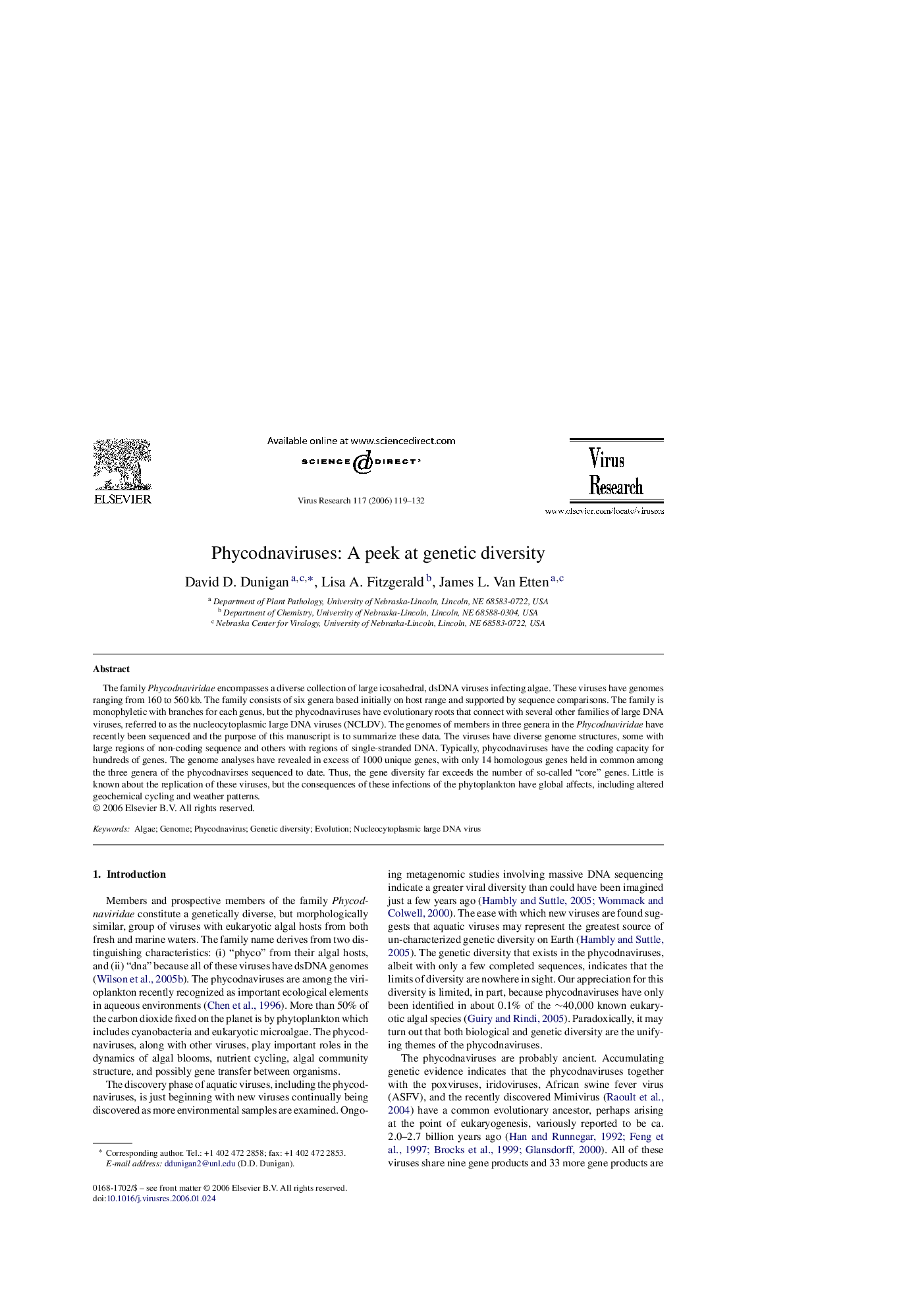| Article ID | Journal | Published Year | Pages | File Type |
|---|---|---|---|---|
| 3431386 | Virus Research | 2006 | 14 Pages |
The family Phycodnaviridae encompasses a diverse collection of large icosahedral, dsDNA viruses infecting algae. These viruses have genomes ranging from 160 to 560 kb. The family consists of six genera based initially on host range and supported by sequence comparisons. The family is monophyletic with branches for each genus, but the phycodnaviruses have evolutionary roots that connect with several other families of large DNA viruses, referred to as the nucleocytoplasmic large DNA viruses (NCLDV). The genomes of members in three genera in the Phycodnaviridae have recently been sequenced and the purpose of this manuscript is to summarize these data. The viruses have diverse genome structures, some with large regions of non-coding sequence and others with regions of single-stranded DNA. Typically, phycodnaviruses have the coding capacity for hundreds of genes. The genome analyses have revealed in excess of 1000 unique genes, with only 14 homologous genes held in common among the three genera of the phycodnavirses sequenced to date. Thus, the gene diversity far exceeds the number of so-called “core” genes. Little is known about the replication of these viruses, but the consequences of these infections of the phytoplankton have global affects, including altered geochemical cycling and weather patterns.
